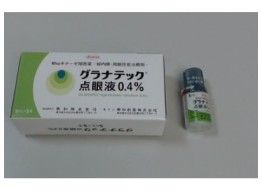Rabeprazole Na tablets 10 mg for ulcer and Helicobacter pylori (Aciphex, Pariet, Rafron)
What are Rabeprazole Na tablets 10 mg for ulcer and Helicobacter Pylori (Aciphex Pariet, Rafron)?
Rabeprazole Na tablets work as a potent proton pump inhibitor, helping to treat various gastrointestinal conditions by effectively reducing stomach acid production and suppressing gastric acid secretion from the gastric mucosal cells. This mechanism of action helps to alleviate symptoms and promote healing in a range of conditions.
One of the primary applications of Rabeprazole Na is in the treatment of Zollinger-Ellison syndrome, a rare disorder characterized by excessive acid production in the stomach. By targeting the proton pumps responsible for acid secretion, Rabeprazole Na effectively brings acid levels under control, providing relief to patients suffering from this condition.
Rabeprazole Na is also extensively used in the management of different types of ulcers, including anastomotic, gastric, and duodenal ulcers. These ulcers can be quite painful and disruptive to one's daily life. Rabeprazole Na accelerates the healing process by reducing the acid environment in the stomach, allowing the ulcers to gradually heal and alleviating discomfort.
These tablets are highly effective in providing relief from heartburn and pain associated with reflux esophagitis, a condition where stomach acid flows back into the esophagus, causing irritation and inflammation. By reducing the amount of acid reaching the esophagus, Rabeprazole Na offers substantial relief to patients struggling with these distressing symptoms.
In terms of pharmacological superiority, research has indicated that Rabeprazole Na exhibits quicker activation and inhibition of proton pumps when compared to omeprazole or lansoprazole. This rapid onset of action means that patients can experience relief more promptly after starting treatment. Notably, Rabeprazole Na demonstrates its efficacy from the very first day of treatment, significantly reducing intragastric acidity. This quick response is beneficial for patients dealing with severe symptoms, as it rapidly addresses the underlying acid-related issues.
Furthermore, Rabeprazole Na has shown promising results in eradicating Helicobacter pylori, a bacterium commonly associated with gastritis and peptic ulcers. By inhibiting bacterial growth and motility, this medication helps to eliminate Helicobacter pylori infections, preventing further complications and promoting healing.
In addition to its primary therapeutic effects, Rabeprazole Na is well-tolerated by most patients, and its safety profile is well-established through extensive clinical use.
Active principles: rabeprazole sodium
Amount: 100 tablets
Maker: Kyorin Rimedio Co. Ltd., Kanazawa, Japan
Indications:
- treatment of gastric ulcer,
- treatment of the duodenal ulcer,
- Relief of pain and heartburn in reflux esophagitis,
- treatment of anastomotic ulcer,
- treatment of Zollinger–Ellison syndrome,
- elimination of Helicobacter Pylori.
How to take
For gastric ulcers, duodenal ulcers, anastomotic and Zollinger-Ellison Syndrome: adults should take one tablet (10 mg) at a time, once a day. Your doctor may increase the dosage to 2 tablets (20 mg) at a time, once a day. Patients with anastomotic and gastric ulcers should receive treatment within 8 weeks. Patients with duodenal ulcer should receive treatment within 6 weeks.
For reflux esophagitis: take one tablet (10 mg) at a time, once a day. Your doctor may increase the dose to 2 tablets (20 mg) at a time, once a day. Treatment usually lasts 8 weeks. If the results are not satisfactory, your doctor may recommend 1-2 tablets (10-20 mg) a day, for an additional 8 weeks. The dosage of 2 tablets (20 mg) a day can only be prescribed for patients with severe mucosa injuries.
For maintenance therapy in patients with relapsing reflux esophagitis: take 10 mg at a time, once a day. When proton-pump inhibitor treatment is ineffective, take 10 mg at a time, 2 times a day as maintenance therapy.
For treatment of non-erosive gastroesophageal reflux disease: adults should take 1 tablet (10 mg) at a time, once a day. The maximum duration of use is 4 weeks.
For suppression of recurrence of gastric/duodenal ulcer associated with low-dose aspirin medication: adults should take 5 mg of the active ingredient at a time, once a day. If the treatment is ineffective, take 10 mg at a time, once a day.
For helping to eradicate Helicobacter pylori bacteria: adults should take 1 tablet (10 mg) concomitantly with 750 mg (titer) of amoxicillin hydrate and 200 mg (titer) of clarithromycin at a time 2 times a day for 7 days. Clarithromycin may be increased to 400 mg (titer) at a time, up to 2 times a day. If this treatment resulted in failure, take 1 tablet (10 mg) concomitantly with 750 mg (titer) of amoxicillin and 250 mg of metronidazole, at a time, 2 times a day, for 7 days.
Contraindications: do not use for pregnant and breastfeeding women. Do not use for patients with impaired liver function.
Important information
Do not crush or chew these tablets.
If an allergic reaction occurs, patient needs to stop using the medicine and consult with their doctor. If patient is taking any other medication or treatment, they should consult with their doctor in advance.




